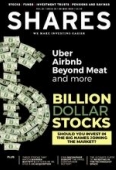Archived article
Please note that tax, investment, pension and ISA rules can change and the information and any views contained in this article may now be inaccurate.
Why there may never be zero-fee ETFs in the UK

Exchange-traded funds (ETFs) that don’t charge a fee can sound too good to be true, and for people in the UK this may well turn out to be the case.
Zero-fee ETFs, as the name suggests, are funds that do not come with any product charges.
Fidelity was the first company to offer zero-fee ETFs when it launched four index funds last year with what it calls a ‘zero expense ratio’, whereby no management fees, service fees, and other things like transaction costs are charged.
While other providers are also planning to launch zero-fee ETFs, all of them, including Fidelity’s products, are only available in the US.
The ETF market is more developed in the US than in the UK and so American providers are able to keep costs lower in a way European firms aren’t able to, according AJ Bell’s head of passive portfolios Matt Brennan.
However, it is worth noting many investment platforms will allow you to trade US-listed securities.
US ALWAYS ONE STEP AHEAD
The US market for ETFs has always been regarded as one step ahead of the UK, with innovation mostly taking place in America first. The first ETF ever launched was available to investors in the US in 1993,
while UK investors had to wait until 2000.
Brennan says the likes of Fidelity are able to launch zero-fee funds because they themselves can create the indices that will be tracked, which helps them keep costs low.
‘On a FTSE 100 ETF for example, a large part of the fee goes to the index provider – FTSE, MSCI, etc – but in the US, the big firms can create their own index and that can lower the costs of an ETF by one, two or three basis points,’ he explains.
European providers like Legal & General Investment Management and Amundi already have low cost ETF ranges, with some funds costing as low as 0.04% and 0.05% respectively.
They have been able to lower costs in part by moving away from following some FTSE and MSCI indices and instead using ones from independent providers like Solactive, something which Brennan
says is a clear indication that following a well-known index makes up a big part of the fee for some of these ETFs.
But being able to create their own index still eludes most ETF providers.
DIFFERENT RULES
A major incentive for companies in launching zero-fee ETFs comes from stock lending. Short-sellers pay a fee to borrow shares from fund companies, which means there is a viable business model for zero-fee ETF providers in the US.
Such ETF providers are likely to gather a lot of assets thanks to having zero fees meaning they have more money to buy shares, and therefore more shares to lend out. For example, Fidelity’s zero-fee Total Market Index fund pulled in $2.1bn in six months.
These stock lending rules don’t apply in the UK, notes Adam Laird, Lyxor’s head of ETF strategy for northern Europe, meaning fund managers can’t keep the fees they make from lending shares to short-sellers. Instead they have to put it back into the fund.
On this basis, Laird believes we won’t ever see zero-fee ETFs in the UK. ‘A fund’s operating expenses need to be paid. If it’s going to be viable it needs to make money somehow,’ he says.
NEED FOR TRANSPARENCY
Laird doubts there would be enough demand in the UK for such products anyway, given our different investment mindset compared to investors in the US.
‘We want to know how an investment is being paid for. In the UK, we know that if it looks too good to be true, it probably is. But in the US, investors put more scrutiny on cost and are maybe less conscious on the risk element,’ he explains.
Brennan on the other hand thinks at some point down the line we could see zero-fee ETFs hit the UK market, though that will rely on companies being allowed to keep the fees from lending out shares.
‘There’s a lot of different dynamics in the market in Europe, but as it grows and if regulation isn’t adapted (to stop providers keeping fees from stock lending), there’s no reason why we couldn’t see zero-fee ETFs in the UK,’ he says.
One thing they both agree on is that looking at the fee should always be only one aspect of choosing a fund.
DO NOT FOCUS EXCLUSIVELY ON COST
‘Don’t be blindsided by the charge. There are some very low cost options for UK investors anyway, but you need to make sure the investment is right for your portfolio and objectives,’ warns Laird.
Brennan adds that the ETFs’ performance is also an important factor, as even with a supposedly free ETF you could be paying for it in ways that aren’t immediately clear.
‘Focusing on the fee is a bit of a red-herring,’ he says. ‘If an ETF costs 0.2% but it always beats the benchmark by 0.3% each year, then it’s outperforming by 0.1%. But if you have a zero-fee ETF that’s performing 0.1% behind the benchmark, then you’re effectively paying 0.1% on that fund.’
Important information:
These articles are provided by Shares magazine which is published by AJ Bell Media, a part of AJ Bell. Shares is not written by AJ Bell.
Shares is provided for your general information and use and is not a personal recommendation to invest. It is not intended to be relied upon by you in making or not making any investment decisions. The investments referred to in these articles will not be suitable for all investors. If in doubt please seek appropriate independent financial advice.
Investors acting on the information in these articles do so at their own risk and AJ Bell Media and its staff do not accept liability for losses suffered by investors as a result of their investment decisions.

 magazine
magazine










